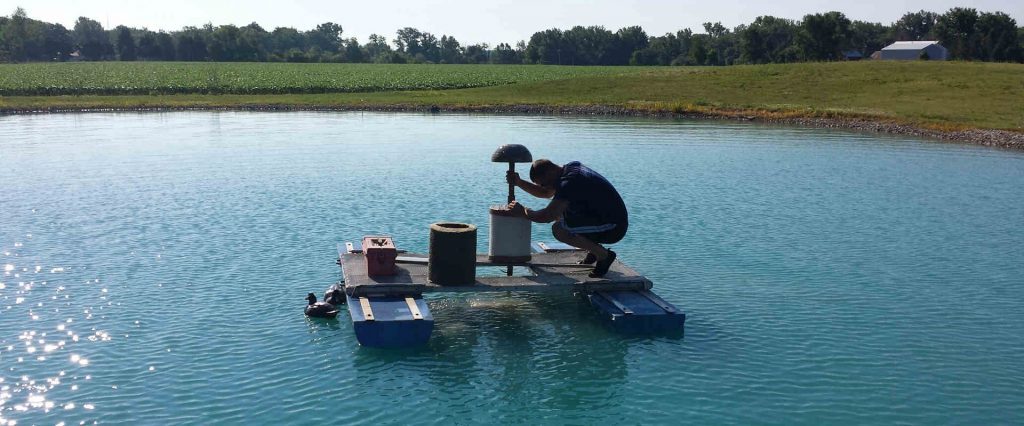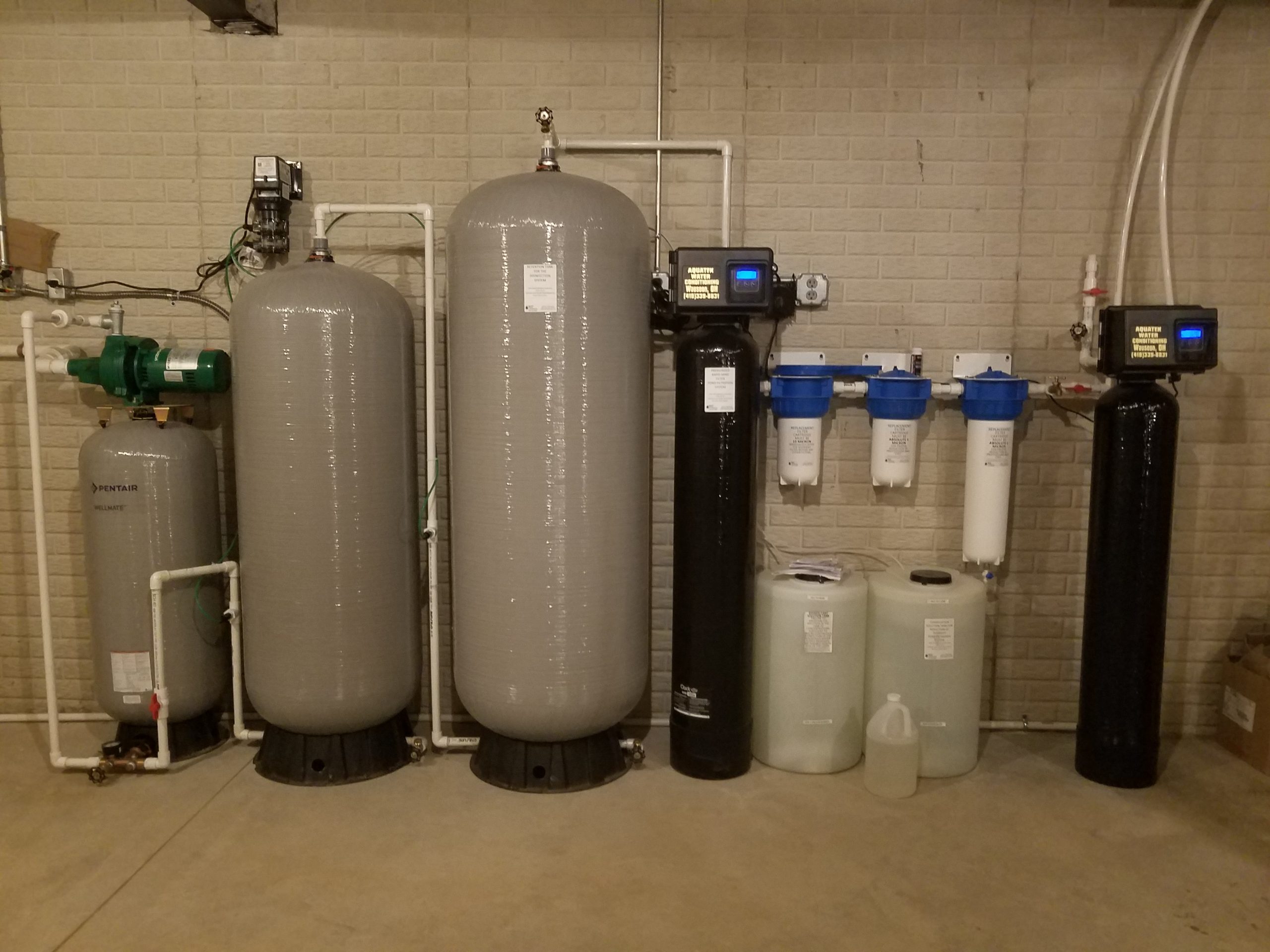What You Need to Know About Pond Water Treatment

Understanding pond water as a potable water option
Water treatment professionals understand there is no “one-size fits all” system to meet every homeowner’s water situation. Water quality and quantity differ from one home to the next, especially in rural areas outside of municipalities. Lack of water volume or poor water quality may be a significant concern many households face.
Imagine living in a home where only one faucet can be used at a time and showers are limited due to lack of water pressure or running out of water from a low yield well. Or running water prior to invited guest’s arrival resulting in an embarrassing sulfur odor. Envision the time and costs involved in hauling water from miles away to fill a water storage container in order to supply the household’s needs.
These scenarios are daily realities for many households where drilling wells simply aren’t attempted due to known lack of water, or water quality issues in the area. Today’s busy homeowners want the peace of mind of a reliable water source. Water treatment professionals can partner with the homeowner by walking through a water treatment strategy which saves them time, effort and is cost effective for the future.
A viable option is a pond water treatment system. Ponds have long been known for recreational uses such as swimming, fishing, and ice skating. But ponds can also provide homeowners with a potable water source for homes and barns when installed by certified water treatment professionals.
Over the past forty years, ponds have become a common, safe, and unlimited water source for many homeowners throughout the rural area of Northwest Ohio. These systems have evolved over the years from very small and minimal filtration to the much more robust treatment filtration seen in larger households today.
Is Pond Water Safe to Drink?
A concern of many homeowner’s considering a pond water treatment system is the safety of drinking “pond water”. The thought of the water source coming from where fish and people swim sometimes produces an “ew” factor. This can be the first hurdle in talking with a homeowner.
In the state of Ohio, the Ohio Department of Health (ODH) designs the pond water treatment system which is regulated by the Ohio Revised Code (O.R.C.) and governed by local health departments. With revisions to the code every few years, systems have evolved over time as more testing and responsibility to provide safe water come to the forefront.
O.R.C requires that systems must be installed by licensed private water systems contractors through ODH. All treatment systems must have the proper permits prior to any installation. This ensures the water is potable and bacterially safe for consumption. Ongoing education is required to maintain certification for private water systems contractors.
To ensure proper filtration, O.R.C requires multiple pieces of equipment including but not limited to, solution tanks for alum, a coagulant to help aid in the removal of suspended solids, and a disinfectant to take care of bacteria in the water, retention tanks for contact time, a rapid sand filter for removal of sediment and a cyst cartridge filter. A carbon filter is added to improve the taste of the water and to eliminate all traces of disinfectant in the final product. Per the O.R.C., identification labels must be placed on equipment, along with educating the homeowner about the maintenance and care of the system. There can be slight variations to equipment installed, when approved by the local health department. In addition to the pond water treatment systems, it is becoming more common for homeowners to have water softeners, reverse osmosis systems and/or pressure boosting pumps installed.
Following installation, the pond water treatment system must undergo an inspection by the local health department. The inspection ensures the homeowner that the system is installed properly, and a bacteria test is administered by the health department to determine the home has potable water. A required test kit is provided after installation. The test kit is used by the homeowner to monitor their water.
To further punctuate safety, the O.R.C. requires a service agreement between the homeowner and the installing provider. The local health department provides an annual water bacteria test.

Succeeding Together
Installation and design of pond water treatment systems require planning for both existing homes and new construction homes. It is common for the system to be installed in stages during a construction process. For the water treatment professional, it is important to become involved as early as possible in the process of a new construction home.
As with any construction, the process is dependent on when the house and pond construction are started, as well as working with the health department, homeowner, and contractor to make sure that the system is properly designed.
Some important points to discuss with the homeowner and contractor to ensure a smooth installation of a pond water treatment system are:
- Discuss any permit application and process-separate permits are required for the construction of the pond as well as for the pond water treatment system
- Discuss the proper space for the equipment in the home design
- Discuss proper electrical power to be supplied for pump and drain for backwashing filters
- Discuss proper size of water line and placement
- Discuss where the water line should enter the pond and point of entry into home
In some areas of the country, like in Northwest Ohio, weather is factored into installation of pond water treatment systems. Systems must be installed in insulated areas and strategically planned when the ground is soft enough to trench in a line, and the pond is not frozen.
For existing homes, planning includes many of the above items for a new build, such as proper placement and space for the system, running water lines and placement, and many times digging a pond.
Weighing Options
When a homeowner is faced with the decision to drill a well, dig a pond, or use the existing pond as a potable water source, the question of cost arises. It is difficult to ascertain at times. It is encouraged that the homeowner speaks with neighbors to gather information on their water source. This will help determine which water treatment strategies are best.
Here are some common considerations:
- In areas of known low water volume or heavy sulfur, risks of a well not being struck with a viable water vein may be higher
- Digging ponds can be a large, up-front cost that does not fit into the homeowner’s budget
- Constant headaches of low volume or low-quality water for the homeowner
- Most well water will require filtration
- Ponds offer an unlimited, viable water source
Maintaining a Healthy Pond
Although it is not a requirement for a pond water treatment system, maintaining the health of a pond is suggested. Managing algae growth and weeds will help in the quality of water and overall health of the pond. When using a pond as a water source, there are FDA approved products that are safe for drinking water systems. Used properly, the products will aid in keeping the water clear and minimize suspended solids, resulting in a clean, great looking and healthy pond.
Everyone Wants Good Water
Water. Turn a lever and water flows, hands are cleaned, drinks are taken, baths are drawn, and clothes are washed. It seems so simple, yet, for many the quest for good water is a problem. Water treatment professionals strive to help homeowners with water needs, and in rural areas, installing a pond water treatment system may be the answer.
If interested in finding more information about this safe, viable, and cost-effective option, contact your local or state health department.
This article written by Brandon Schindler was published in the Water Quality Products (WQP) Magazine in the March 2021 edition. View the article here.
